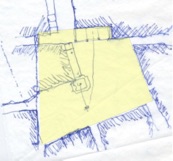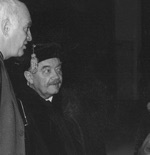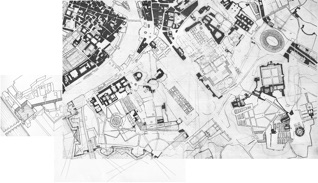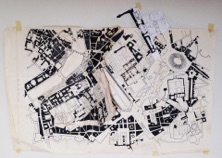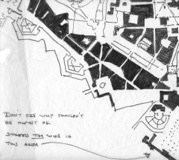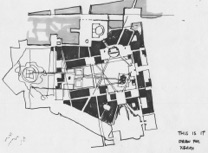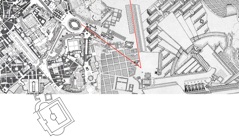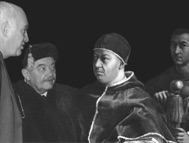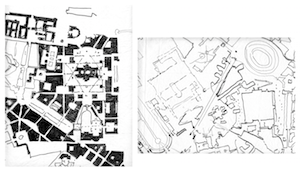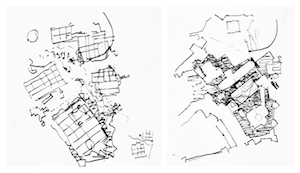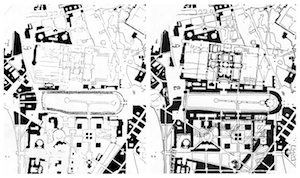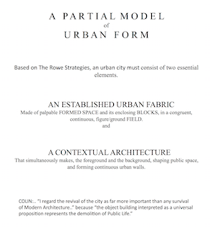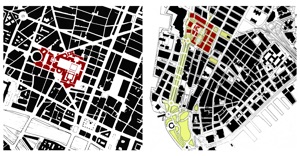C - 1. This is an amazing comparison (only made possible by Google Earth). Lower Manhattan is on the left and the Pudong area of Shanghai is on the right. Each image shows one square mile. Both are printed here at the same scale along with the Pudong skyline.
It is a warning. The richness of Manhattan’s streets and blocks have been erased leaving just the towers in a melancholy emptiness.
